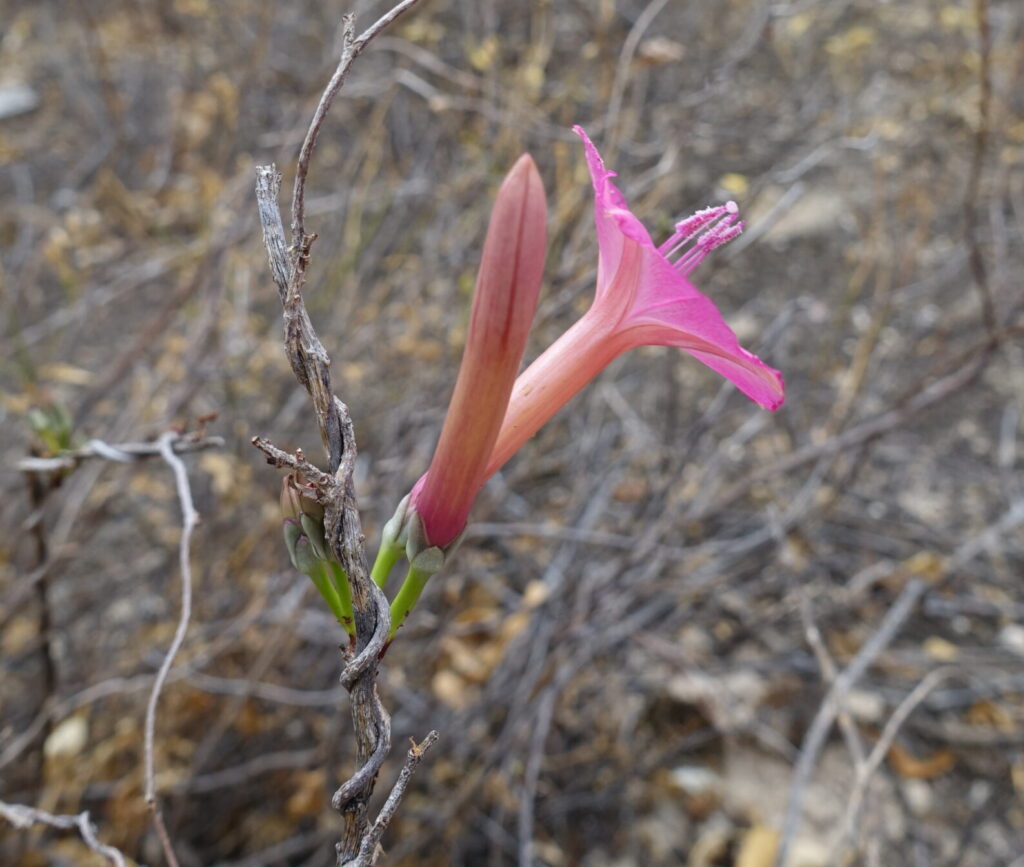
Carl Linnaeus described the plant genus Ipomoea L. and seventeen species in 1753, in the first edition of his Species Plantarum. Since then, more than 3,000 names associated with the genus have been published, making Ipomoea the largest genus in the family Convolvulaceae. It includes herbs, shrubs, lianas and trees distributed across all tropical and subtropical regions of the world, from sea level to 4,000 meters, and spanning diverse habitats, from tropical rain forests to semi-arid coastal environments. The genus also extends into temperate regions as far North as Canada, with several widespread species achieving nearly global distributions. We estimate the genus includes 850-900 species, several still pending to be formally described, with approxima
Two species have global economic importance as crops: the sweet potato or sweetpotato, Ipomoea batatas (L.) Lam., and the kang-kong or water spinach, I. aquatica Forssk. Additionally, many species are widely cultivated as ornamentals —the group is commonly known as morning glories— while others have become invasive, for example I. cairica (L.) Sweet, I. indica (Burm.) Merr. and I. purpurea (L.) Roth. Ipomoea species are also of interest for their pharmacological potential, with multiple studies identifying anti-tumor properties in various compounds extracted from their leaves and roots.
Our research, combining comprehensive phylogenomic and morphological analyses, confirmed that Ipomoea, as traditionally circumscribed, is paraphyletic with respect to several smaller genera in the tribe Ipomoeeae. We thus treat Ipomoea as an expanded, monophyletic genus, incorporating several smaller genera in the tribe previously considered independent such as Argyreia, Astripomoea, Blinkworthia, Lepistemon, Lepistemonopsis, Rivea, Stictocardia, and Turbina. This view has been outlined in several peer-reviewed articles and book chapters published since 2019 [1], [2], [3], and [4].
The genus
Annual or perennial herbs, subshrubs, lianas, shrubs or small trees, very varied in habit but, most commonly, twining, less commonly decumbent or erect; vegetative parts glabrous or variously hirsute. Leaves without true stipules, alternate, usually petiolate, entire, lobed or compound with separate leaflets; pseudostipules sometimes present. Inflorescence characteristically of axillary cymes, but sometimes very dense and subcapitate or reduced to single flowers or corymbose to foliose paniculate in form, or subterminal and racemose to spicate in erect species; peduncles variable in length, rarely absent; bracts usually indistinguishable from leaves except in species with a terminal inflorescence; bracteoles very small to large, persistent or caducous, scarious, chartaceous or foliaceous, occasionally forming an involucre; pedicels short or long, rarely absent; calyx of five equal or unequal sepals, very variable in texture, coriaceous, herbaceous, scarious, persistent, often enlarging in fruit; corolla ±often showy, small or (usually) large, commonly funnelform, sometimes hypocrateriform, campanulate or suburceolate, pink or white with 5 distinct darker midpetaline bands, the limb distinct from the tube; stamens 5, usually included, equal or unequal in length, dilated and glandular-pilose at base, inserted near base of corolla tube; anthers usually narrowly oblong; pollen spheroidal, pantoporate, echinulate, the grains relatively large; disc annular, ovary 2(–5) locular, 4 (–10)-ovulate, glabrous or pubescent; style simple, filiform; stigma subglobose, 2(–3)-lobed, rarely (Astripomoea and some species in the Arborescens Clade) lobes somewhat elongate. Fruit a globose, 4 (–10) valved capsule or indehiscent; seeds (1–)4–6(–10), triquetous, ovoid or subglobose, glabrous or variously hirsute.